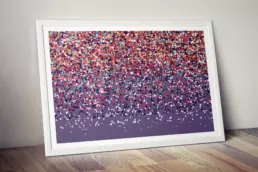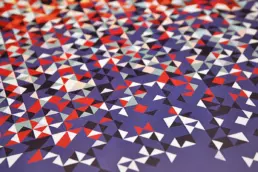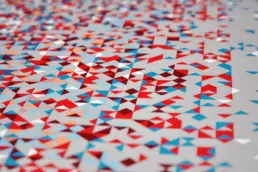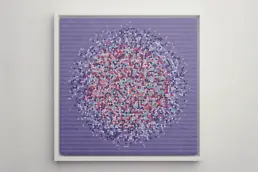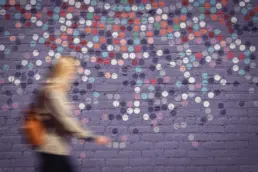I had an idea of creating a piece of rules-based, but randomised, generative art. After some consideration, I settled upon rolling dice, and using the numbers to influence colour on a set grid.
Each square in the grid was broken into four segments, and every possible sum of a throw assigned a colour, giving a palette of eleven different hues. Each segment was filled with a colour after every throw.
The grid is broken down further into horizontal sections. Moving down the piece into these sections, one of the numbered colours is lost, becoming the same as the background. This reveals interesting areas of contrast as the palette deteriorates.
This process took around five weeks of intermittent dice action!
Several years later, I revisited this project and decided to try a circular grid. This time the art is divided into cores, with the colour palette gradually breaking down from the centre to the outer sections.
